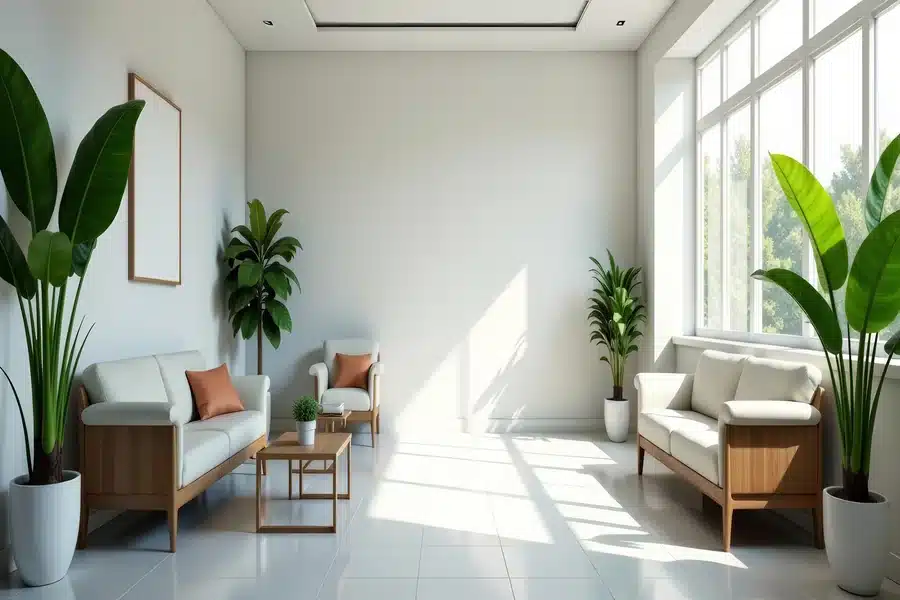Waiting rooms are one of the most crucial areas in any office space. They serve as the first point of contact where guests, visitors, and potential clients begin forming their opinions about your brand or business. This ability for waiting rooms to either make or break a deal is why most companies invest considerable time and effort into making thoughtful decisions when designing their reception areas.
When it comes to this design process, one of the first big decisions businesses face is choosing the right visual direction. Executives begin to ask themselves if they should go with a modern, minimalistic look or stick with a warm, traditional style. This decision is tremendously important as it sets the tone for your office space and influences how clients and visitors perceive your brand.
Traditional Waiting Room
Traditional reception areas remain a timeless choice that many businesses continue to favor today. If you can picture a waiting area with warm, inviting tones, natural hardwood furniture, and a structured layout, then you’re already halfway there. This classic aesthetic feels instantly familiar to most people, helping you create a sense of trust and comfort from the moment visitors pop through your doors.
Waiting rooms with this aesthetic also help create a sense of heritage and trust, making them the perfect choice for established businesses that have stood the test of time. With their rich furniture and classic elements, any guest will feel like they are in good hands once they walk into your reception area, which is exactly what you want. So, whether you are running a law firm or financial company, a traditional waiting room will always help reinforce the idea that your business is experienced, reliable, and will last for many years.
Modern Waiting Room
Modern waiting rooms feature contemporary furniture that reflects a new age of business that focuses on placing personal connection, comfort, and a more human experience above everything else. From soft couches to stylish loveseats, waiting room furniture elements in this reception area are meant to feel approachable and inviting. The general idea behind the modern aesthetic is that a waiting area should feel more like a living room than a traditional reception.
Unlike older receptions that use vibrant hardwood furniture, most modern waiting areas have a minimalistic, neutral tone that favors soft greys and whites. This simple palette helps create an airy atmosphere that makes your waiting room feel more breathable and open, which can help improve visitor comfort during busy hours. These themes of minimalism, simplicity, and a modern aesthetic are generally preferred by forward-thinking businesses that focus more on creating a long-lasting experience than a first impression.
Which Aesthetic Should I Choose for My Waiting Area: Traditional or Modern
There has never been a one-size-fits-all answer when choosing an aesthetic for your waiting area. An established business that has existed for centuries can have a modern waiting area with a minimalistic aesthetic, while modern businesses can select traditional furniture for their receptions. What should guide your decision should be your brand’s tone, vision, values, and the kind of experience you are trying to convey.
Do you want to tell customers you are a luxurious business that cares deeply about trust and fundamental values? If so, traditional waiting room furniture can help you sell your message. Meanwhile, companies trying to create an idea of modernity and cutting-edge concepts may benefit from choosing a more modern aesthetic that favors a more forward-thinking experience.



